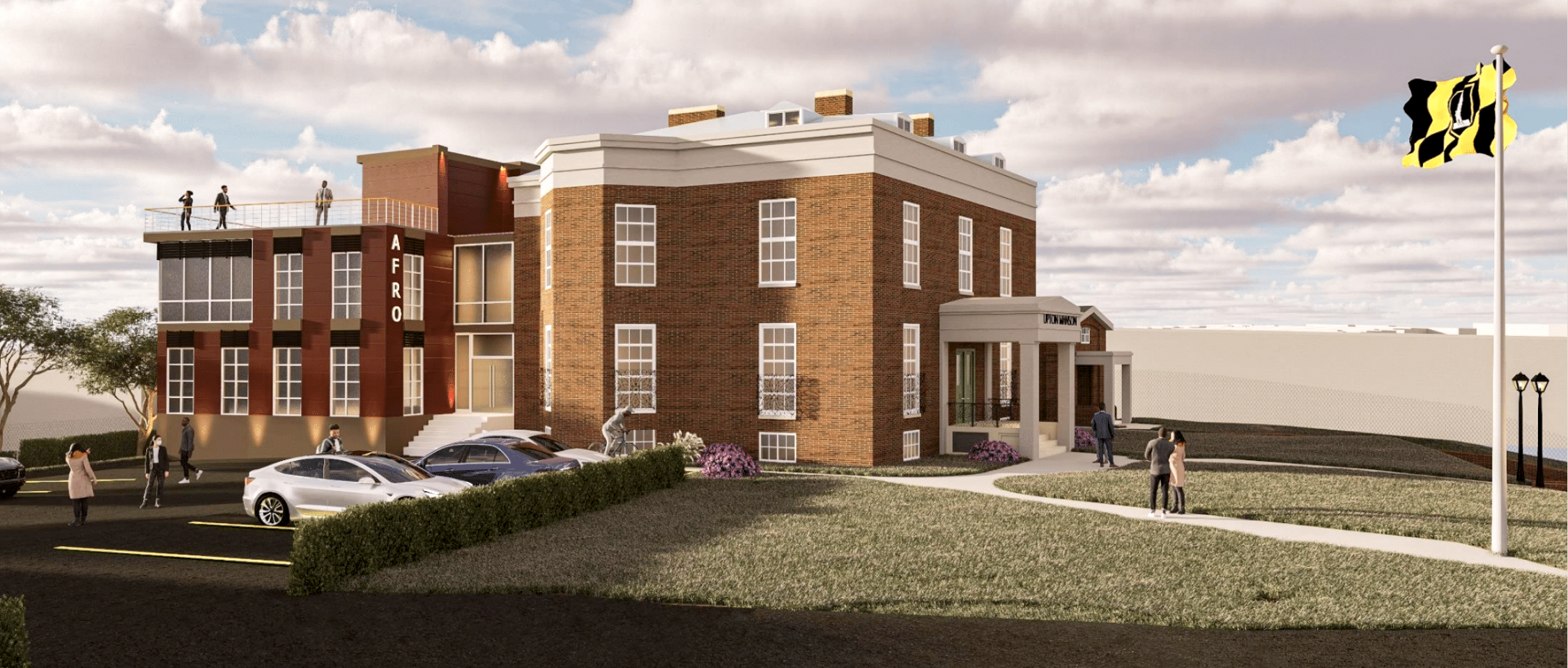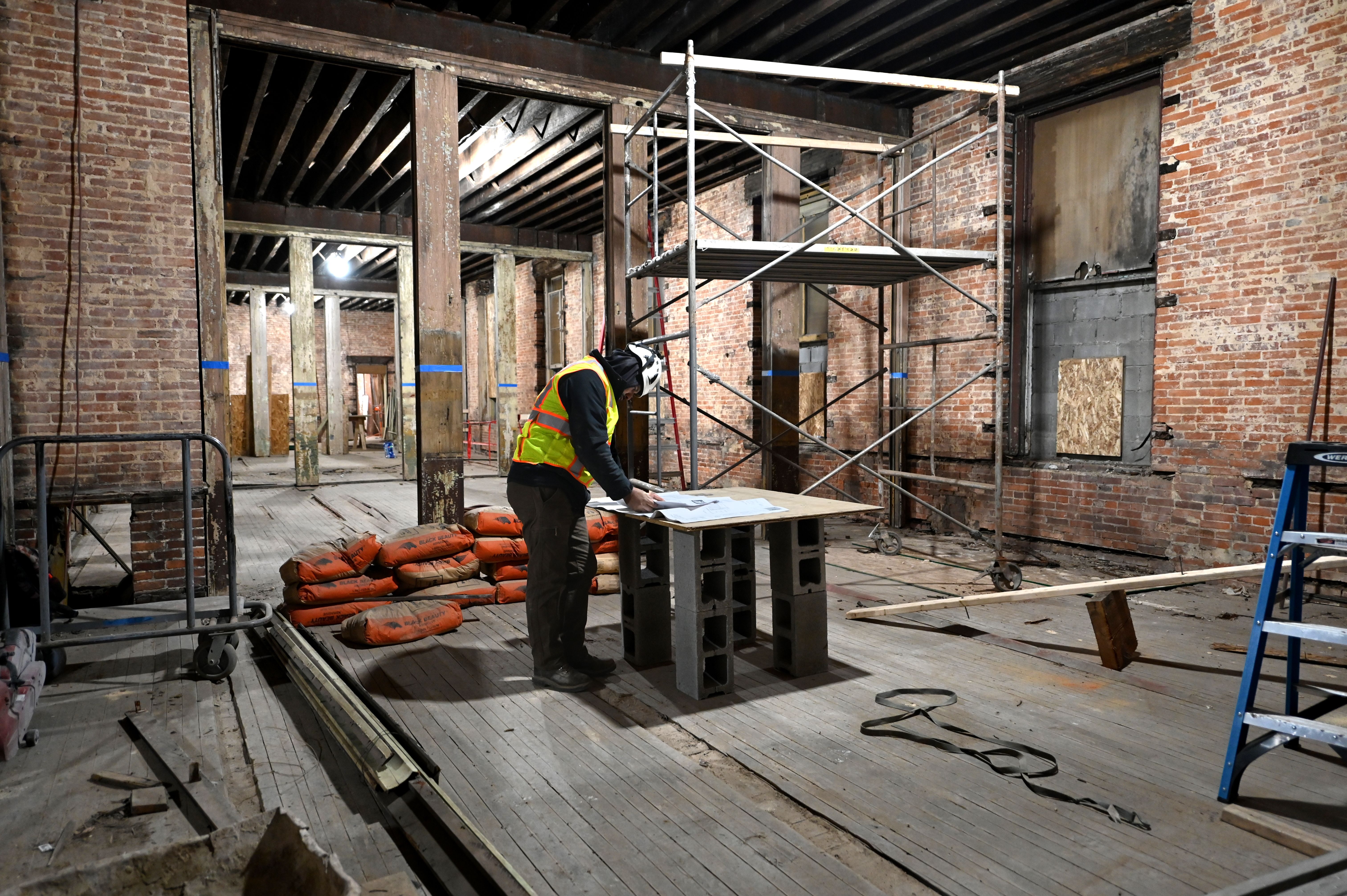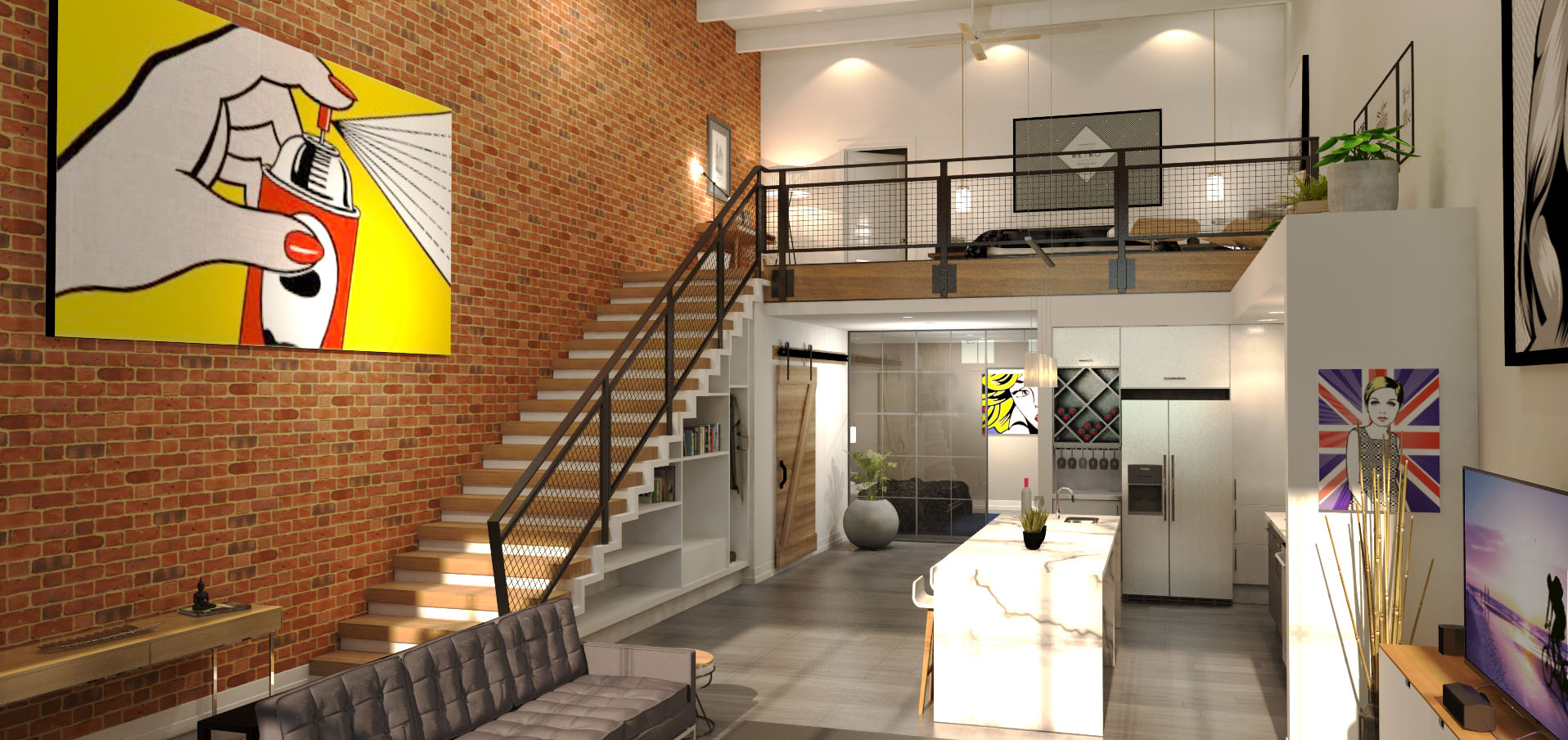
The former Radisson Hotel and Holiday Inn in Baltimore is being transformed into a two-tower, 708-unit multifamily complex with 30,000 square feet of retail. Image courtesy of MacKenzie Commercial Real Estate Services.
Rattling off the retail and residential strengths of the Vivo Living development in the Inner Harbor, Michael Ruocco describes the “hotel upcycling” venture as “the definition of good repositioning” and “a really positive sign that out-of-state investors see a lot of potential in the City of Baltimore and the Central Business District, specifically.”
California-based Vivo Investment Group is currently converting the former Radisson Hotel and Holiday Inn into a two-tower, 708-unit multifamily complex with 30,000 square feet of ground level retail space. The apartments, which will range from 250 to 900 square feet, are expected to rent for $1,000 to $1,800 a month – about 10 to 20 percent cheaper than other units downtown and well below rental rates in Harbor East, Canton and Federal Hill, said Ruocco, Senior Vice President and Principal with MacKenzie Commercial Real Estate Services.
That price point combined with the proximity of employers and urban amenities (including the renovated CFG Bank Arena across the street) should make Vivo attractive to young, downtown workers, medical residents, travelling nurses, graduate students and other renters.
Meanwhile, Vivo’s retail space – which MacKenzie is looking to fill with a full-service restaurant/bar, several fast casual restaurants, ghost kitchens, a fitness center, salon and other personal service outlets – will “help create a critical mass of retail downtown where there has been a void, especially in the last three years,” said Tim Harrington, Senior Real Estate Advisor with MacKenzie. “The end goal is to create an environment where people are living, working and playing in downtown Baltimore.”
Successfully repurposing underperforming commercial real estate assets is no simple task in the face of high interest rates and construction costs, fears about a possible recession and ongoing shifts in retailing and work culture. Projects require committed stakeholders, extraordinary construction efforts, creative financing and considerable patience.
Yet developers in Baltimore and elsewhere around Maryland are gradually advancing a variety of adaptive reuse projects: creating residences in former hotels and commercial buildings, life science facilities in office towers, commercial and community spaces in abandoned industrial buildings, mixed use developments at retail centers, and master plans to transform commercial acreage. Development teams say those projects have the potential to not only deliver good returns on individual properties but to fuel broader recovery in struggling neighborhoods.
“Office product, as a whole, has needed to adapt to stay viable,” Ruocco said. “But these buildings are not trash to be cast aside. There is tremendous value in the existing infrastructure. In an area where you have a compressed amount of land, like Baltimore, it is very difficult to find opportunities that are affordable for new, ground-up construction, so adaptive reuse provides an opportunity for everyone to get a better value for their dollar.”
Adaptive reuse projects can be especially effective at meeting the current challenge of attracting employees back to offices, said Adam Rhoades-Brown, Vice President of Cross Street Partners.

In Upton, Cross Street Partners is involved in the transformation of Upton Mansion (an adaptive reuse project) into the AFRO Archives. Image courtesy of Cross Street Partners.
“The market is shifting. People want space that is unique, that has character and some history behind it, but also they want a building with a theme and a mission,” Rhoades-Brown said. “People want to be around like-minded people who are working on similar things so that the building creates a community. It takes a combination of architecture, design, amenities and, most importantly, community to get people to come into the office and to encourage tenants to continue to lease physical space. That is how we see our projects going forward.”
The Hoen & Co. Lithograph Building – a $37 million adaptive reuse project – is one example of that, Rhoades-Brown added. “It is amazing that we have a commercial building in the middle of East Baltimore that is fully leased and is the center of a university, nonprofit and for-profit operations in a neighborhood that was 80-90 percent vacant before this project was completed.”
Executing that project required “visionary early partners” and a capital stack that included considerable tax credits, he said. “For Hoen, the rental rates that we could get did not support the cost of renovation. Therefore, we had to use any and all subsidy tools to make the financials work,” including state and federal historic tax credits and new market tax credits.
However, that effort both delivered a successful, 85,000-square-foot commercial development and spurred other developments on nearby properties. Those include residential construction by smaller developers and two current Cross Street projects — the Henderson Crossing housing development and a mixed-use redevelopment of The Tobacco Warehouse on North Washington Street.

The proposed transformation of Upton Mansion into the AFRO Archives. Image courtesy of Cross Street Partners.
“Once you learn a neighborhood and gain community partners, you can build on your investment,” Rhoades-Brown said.
And Cross Street Partners believes it can trigger similar revivals elsewhere.
“Cross Street sees East and West Baltimore as the future for our city,” Rhoades-Brown said. “It is fundamentally more difficult to get projects executed in those markets. To us, that’s an opportunity. We like to find value in places where other people don’t see it.”
Cross Street Partners is currently serving as financial advisor and co-developer for two adaptive reuse projects in Upton – the Justice Thurgood Marshall Amenity Center at PS 103 and the AFRO Archives at Upton Mansion – and expects to see similar, broad economic benefits once those projects are completed.
Adaptive reuse, however, is not solely an urban activity.
In Cambridge, Cross Street Partners has redeveloped a mostly vacant and decaying produce packing plant into a retail and office center that has attracted government offices, a coworking space, aquaculture company, commercial kitchen and restaurant/event space.

Another adaptive reuse project in Upton: The former PS 103 will be transformed into the Justice Thurgood Marshall Amenity Center. Image courtesy of Cross Street Partners.
In multiple locations along the I-270 corridor and near University of Maryland and Johns Hopkins University campuses, project teams are transforming under-utilized office space into life sciences facilities.
“There is a lot of bio activity and genetics startups that are jumping into the market,” said Scott Davis, Vice President and Director of Mechanical Engineering at Bala Consulting Engineers. “But rather than looking for a whole building or a campus, they are taking over a couple of labs or maybe a floor, so developers have jumped into this market to make best use of their inventory.”
That market demand is driving both phased renovations of single buildings to accommodate growing numbers of life science tenants and master plans to fully convert clusters of office buildings to life science operations. In some projects, developers are “hedging their bets” on future market demands.
“We are seeing modular or flexible designs that could be modified five years from now to support lab or office operations without doing major surgery on building systems,” Davis said.
Not surprisingly, retail properties are also spurring adaptive reuse efforts in both urban and suburban sites.
“One steady diet we have is in regional mall repositioning as anchors leave or entire malls go dark,” said Gordon Godat, Principal, JP2 Architects.

Repurposing underperforming retail space has become a mainstay for some development teams. In Rockville, JP2 Architects developed a play to transform ground-level retail in loft-style apartments. Image courtesy of JP2 Architects.
JP2 has helped transform empty anchor spaces into grocery stores, lifestyle centers and even churches or has planned redevelopment of the anchor property into a multifamily opportunity.
It has also developed master plans to reinvigorate communities and their retail centers, office properties and other holdings into mixed-use developments, including the development of Northwood Commons beside Morgan State University and the transformation of Columbia’s Merriweather District into new office towers, multifamily buildings, retail and amenity space. The firm is currently working on master plans to redevelop a 25-acre former retail space and a 15-acre site that includes office buildings and a parking garage.
Such large-scale adaptive reuse can benefit from several core practices, Godat said.
First, “we try to include mixed use in every planning opportunity, most importantly, residential. When you can get people onsite for 24 hours a day, you actively engage them in the success of the project,” he said.
Second, “the spaces between the buildings are as important as the buildings themselves. You want to make sure people have green space and recreational spaces. You want to provide spaces that support soft programming events, like outdoor movies, concerts and yoga classes,” he said.
And finally, “we are conscious of the need to bring a level of flexibility to master plans,” Godat said. A new master plan can take anywhere from two to 10 years to get approved “and they can continuously evolve after approval. A 40-acre master plan can take a decade or two to build out. In that time, you could have a recession, economic swings or market changes, so you have to ensure that master plans can evolve and adjust to the trends of the time.”